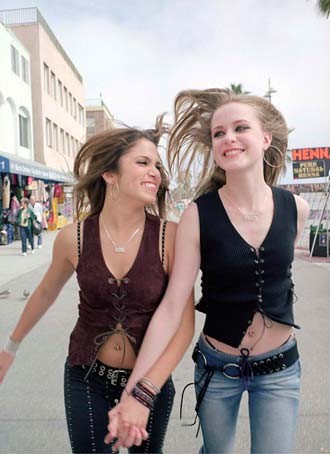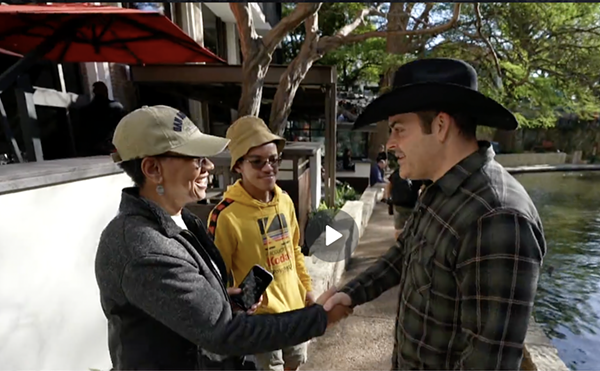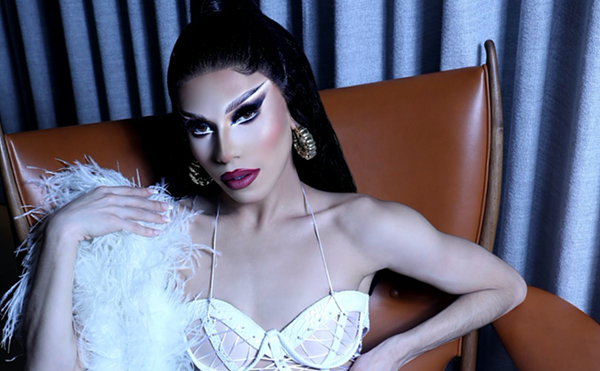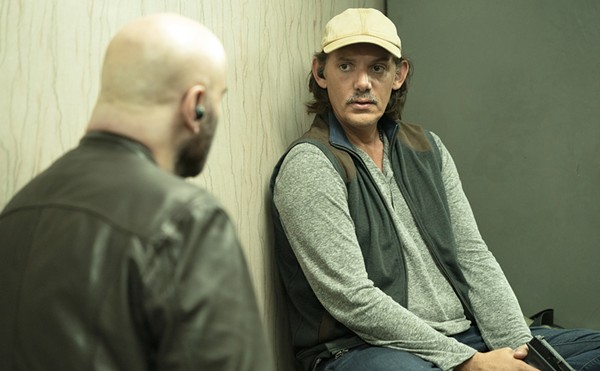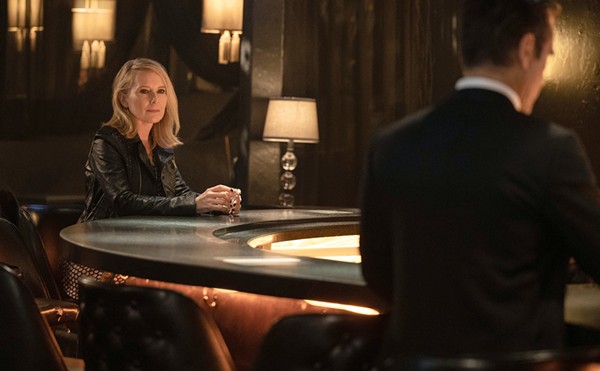| Left to right: Nikki Reed, who co-wrote the script for Thirteen, co-stars in the film with Evan Rachel Wood. Courtesy photo |
Thirteen-year-old girls were an enigmatic species to me when I was a 13-year-old boy, and they still are. But Thirteen provides as close an encounter with contemporary girl culture as a sane adult might want. Co-writer Nikki Reed, now a 15-year-old honors student, drew on her own tumultuous experiences to depict four explosive months in the lives of a couple of seventh graders driven wild by the end of childhood. Catherine Hardwicke's directorial debut is a disturbing peek at how very difficult it is for girls to grow up in contemporary America without growing feral.
When Tracy (Wood) enters Portola Middle School in southern California, she soon wants more than anything else to be accepted as an equal with the coolest clique of girls on campus. They literally knock her socks off, when their mockery of her clothes causes Tracy to discard her unfashionable footwear and purchase an entirely new wardrobe. But it isn't until Tracy steals a stranger's wallet and offers to share the loot that she impresses Evie (Reed), the most awesome of the 13-year-olds, enough to befriend her. Evie, whose name suggests a mini-temptress, adopts Tracy as an eager acolyte, initiating her into the mysteries of sex, drugs, and mutilation. During a long, frenetic binge with Evie, Tracy sets aside her Barbie dolls and other childish things. She becomes a stranger to her teachers, her family, and herself.
American movies about early adolescence are no novelty, but to find one so raw and unrelentingly Hobbesian, in which juveniles - Hollywood's favorite target audience - are not patronized as either cute or hip, but exposed as out of control, you have to go back to Larry Clark's Kids, in 1995, or Tim Hunter's River's Edge, in 1987. Yet what distinguishes Thirteen even from those is its focus on the ordeal of female teens, whose hormones never rage as wrathfully on screen as those of boys. It also assigns an adult, Tracy's mother, a crucial role in the proceedings.
| Thirteen Dir. Catherine Hardwicke; writ. Hardwicke & Nikki Reed; feat. Evan Rachel Wood, Nikki Reed, Holly Hunter, Jeremy Sisto, Brady Corbet, Deborah Kara Unger (R) |
Hoping to bond with the girls, Melanie takes them to a multiplex, but they cannot reach consensus on what to see. They decide that, while Melanie and Mason are watching a (fictitious) John Cusack movie, Tracy and Evie will watch a (fictitious) Jack Black flick. They will meet afterward in the lobby. However, as soon as Melanie is out of sight, the girls slip away from the theater for a spree of shoplifting. If Thirteen had itself been one of the options at the multiplex, I doubt that it would have drawn the interest of these narcissistic girls, who are in no mood to confront their own images this starkly. And because it received an R rating, Thirteen is not a film for 13-year-olds unaccompanied by a parent, but rather for older audiences willing to enter an accelerated alternative universe of shooting and imploding stars. A hand-held camera intensifies the volatility of every moment. Coming of age in America never seemed like such a kick - in the face. •
A CONVERSATION WITH CATHERINE HARDWICKE
By Steven G. Kellman
Although California's Venice Beach is now home, Catherine Hardwicke was born in McAllen, Texas. She graduated from the University of Texas at Austin with a degree in architecture, a field that attracted her with the lure of doing "wild things." But as Hardwicke told the Current by phone during a stop in Dallas, a professor warned she might be "too weird" for architecture, where projects are commissioned by people and institutions born to be mild. She turned to film, a business, she discovered, that is as much averse to risk. It was a struggle to put together the $2 million that enabled Hardwicke to direct her unusual film debut, Thirteen.
Peter Greenaway, who directed The Cook, The Thief, also began as an architect, and his professional training is evident in the mathematical symmetries of his films. Thirteen is not especially architectonic, though Hardwicke notes that, in her earlier work as production designer for such films as Three Kings, Vanilla Sky, and Laurel Canyon, she was called upon to construct houses and entire towns. Although she lacked money to build sets in Thirteen, a fully funded future project might be a better test of whether architecture influences her cinematic style.
Hardwicke wrote the screenplay for Thirteen in collaboration with Nikki Reed, who was 13 at the time and plays Evie on screen. Hardwicke had dated Reed's father and, disturbed by radical changes in the girl's personality, encouraged her to share her anger and insecurity over negotiating puberty. Now 15, Reed must be accompanied by a parent in order to see their film, which received an R rating from the Motion Picture Association of America. Although Hardwicke agrees that teenagers ought to view Thirteen with an adult, she is also perplexed by MPAA ratings: "You can kill as many people as you want, but can't say the F-word twice."
Asked whether current girl culture differs from when she was adolescent, Hardwicke, in her 40s, recalls the cool, cruel cliques that determined schoolgirl status: "I was on the outside and could not get in." But things have also changed. "It is much more confusing to girls now," she notes. "We have accepted sexuality much more openly. We've accepted porn stars into mainstream culture." She points out that it is not to serve the staff that some high schools maintain daycare centers. The challenge, says Hardwicke, is: "How do we find creative things for kids?"
Child labor laws limited the production to nine-and-a-half hours of shooting per day. A tight budget forced the novice director to compile her footage in less than 26 days. Although Hardwicke offered little except a minimal salary, a secondary role, and a strenuous schedule, Holly Hunter was intrigued enough to accept the part of Melanie. Once the Oscar-winning actress signed on, so, too, did Evan Rachel Wood, whose agent had been wary of such risky material.
Two other screenplays, also about disturbing social problems, that Hardwicke wrote before Thirteen have yet to find backers. But the success of her first film means that the former architect and production designer has begun to construct a career as director. •

